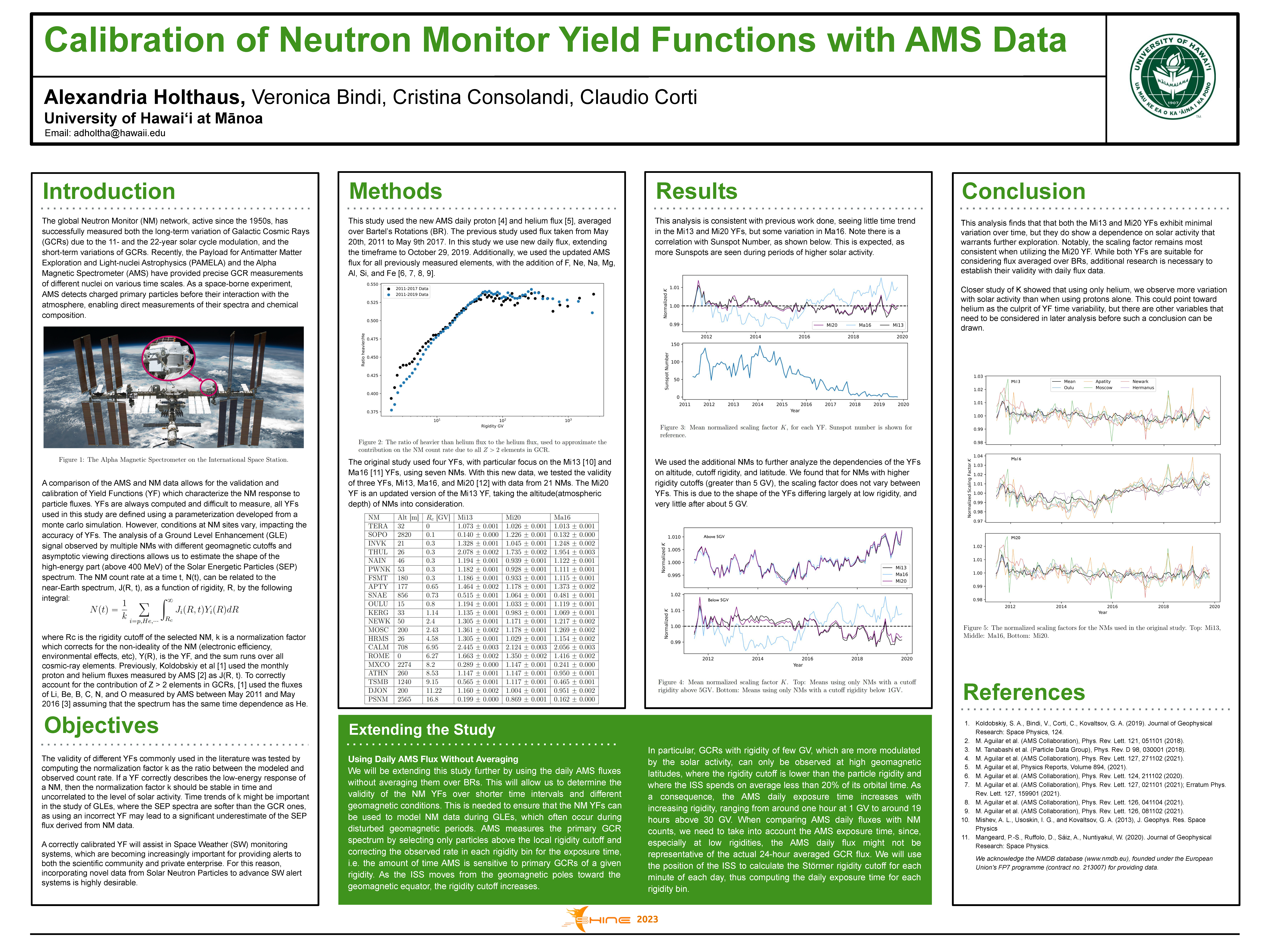Authors: Alexandria Holthaus (UH Manoa), Veronica Bindi (University of Hawaii at Manoa), Cristina Consolandi (University of Hawaii at Manoa), Claudio Corti (University of Hawaii at Manoa)
The global NM network, active since the 1950s, has successfully measured both the long-term variation of Galactic Cosmic Rays (GCRs) due to the 11- and the 22-year solar cycle modulation, and the short-term variations of GCRs, e.g. diurnal variations or Forbush decreases. As a space-borne experiment, AMS detects charged primary particles before their interaction with the atmosphere, enabling direct measurements of their spectra and chemical composition. A comparison of the AMS and NM data allows for the validation and calibration of Yield Functions (YF) which characterize the NM response to particle fluxes. The analysis of a GLE signal observed by multiple NMs with different geomagnetic cutoffs and asymptotic viewing directions allows us to estimate the shape of the high-energy part (above 400 MeV) of the SEP spectrum.
Previously, Koldobskiy et al [1] used the monthly proton and helium fluxes measured by AMS from 2011-2017. In this study we reproduce their results and use new AMS data (2011-2019) to observe variation on a larger timescale, and more closely anyalize trends in the data. The validity of different YFs commonly used in the literature was tested by computing the normalization factor k as the ratio between the modeled and observed count rate. If a YF correctly describes the low-energy response of a NM, then the normalization factor k should be stable in time and uncorrelated to the level of solar activity. Time trends of k might be important in the study of GLEs, where the SEP spectra are softer than the GCR ones, as using an incorrect YF may lead to a significant underestimate of the SEP flux derived from NM data. Our results are consistent with previous work done, seeing no overall time trends in the Mi13 and Mi20 YFs, but some variation in Ma16.
We will be extending this study further by using the daily AMS fluxes without averaging them over BRs. This will allow us to determine the validity of the NM YFs over shorter time intervals and different geomagnetic conditions.


